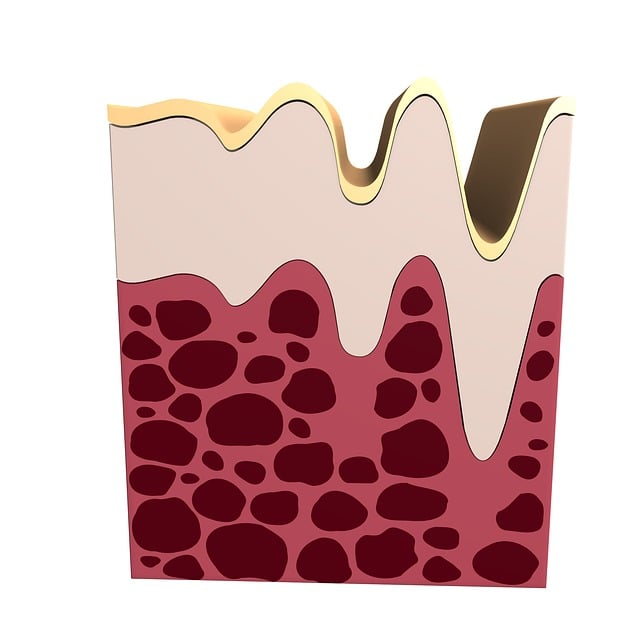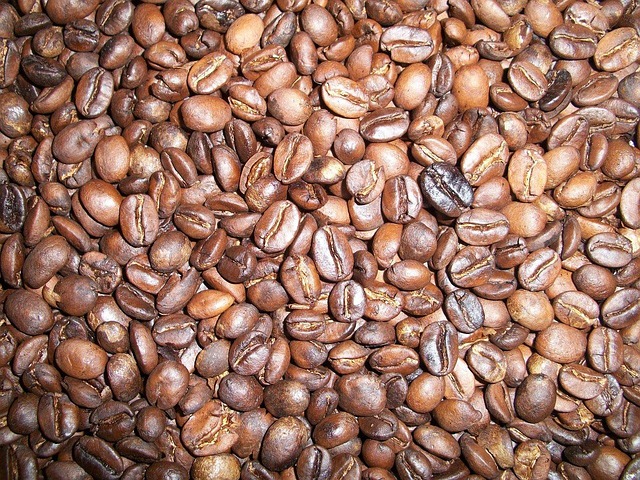Collagen stimulation is a key focus in anti-aging skincare due to its vital role in maintaining skin elasticity and health. Aging causes natural collagen levels to decrease, leading to wrinkles and reduced skin firmness. Various techniques, from topical peptides and supplements to non-invasive treatments like micro-needling and radiofrequency, aim to mimic the body's collagen synthesis process. These methods significantly improve skin texture, reduce fine lines, and enhance overall tissue integrity, addressing both skin health and appearance concerns. Lifestyle factors, including diet and exercise, also play crucial roles in supporting natural collagen production. The future of collagen stimulation looks promising with advancements in at-home devices and personalized AI-driven treatments.
Collagen, the structural backbone of our skin, hair, and nails, plays a pivotal role in maintaining youthful appearance. As we age, natural collagen production wanes, leading to wrinkles, saggy skin, and reduced elasticity. This article delves into the world of collagen stimulation treatments, exploring diverse methods from non-invasive therapies and topical creams to injectable fillers and medical procedures. Discover how these innovations aim to enhance collagen levels, reverse aging signs, and revitalize your complexion.
Understanding Collagen: The Structure and Function

Collagen, a fundamental protein, forms the structural framework of our skin, bones, and connective tissues. Its triple-helix structure provides strength and elasticity, making it essential for maintaining youthful skin and overall tissue health. As we age, collagen production naturally decreases, leading to wrinkles, reduced skin elasticity, and joint discomfort. This decline in collagen can be attributed to various factors, including UV radiation, environmental stressors, and the natural aging process.
Collagen stimulation is a key focus in anti-aging skincare and medical treatments. Through targeted interventions, such as topically applied peptides or oral supplements, collagen production can be enhanced. These strategies aim to mimic the body’s natural collagen synthesis pathways, encouraging fibroblasts to produce more collagen fibers. By increasing collagen levels, skin appears plumper and smoother, fine lines and wrinkles are reduced, and overall tissue integrity is improved, offering a range of benefits for skin health and appearance.
Aging and Collagen Depletion: A Natural Process

As we age, our bodies undergo natural changes that impact various physiological processes, including collagen production. Collagen is a structural protein that provides strength and elasticity to our skin, bones, and other connective tissues. However, with time, the body’s ability to produce collagen decreases, leading to a gradual depletion of this essential molecule. This reduction in collagen levels is one of the primary contributors to the visible signs of aging, such as fine lines, wrinkles, and reduced skin firmness.
The decline in collagen synthesis is a multifaceted process influenced by multiple factors, including genetic predisposition, environmental exposure (like UV radiation and smoking), and lifestyle choices. While it’s an inevitable part of growing older, understanding this natural depletion process has opened doors to various collagen stimulation treatments. These interventions aim to boost collagen production, offering potential solutions for anti-aging concerns and improving overall skin health.
Non-Invasive Methods for Collagen Stimulation

Non-invasive methods have emerged as popular choices for collagen stimulation, offering effective ways to promote skin elasticity and a youthful appearance without the need for surgical procedures. One such method is the use of topical creams and serums enriched with specific ingredients that signal the skin to produce more collagen. These formulations often contain peptides, vitamins, and antioxidants known for their ability to support collagen synthesis and protect existing collagen fibers from damage.
Another promising approach involves advanced technologies like micro-needling and radiofrequency treatments. Micro-needling creates tiny pricks in the skin, triggering a natural healing response that stimulates collagen production. Radiofrequency devices, on the other hand, use heat energy to promote collagen remodeling and new growth. These non-invasive techniques have gained popularity due to their safety, minimal downtime, and significant results in enhancing skin texture and reducing visible signs of aging.
Topical Treatments: Creams and Serums with a Focus on Collagen

Many anti-aging skincare routines incorporate topical treatments, such as creams and serums, designed to boost collagen production. These products often contain key ingredients that stimulate collagen synthesis, enhancing skin elasticity and reducing visible signs of aging. Specific peptides, retinoids, and vitamin C are popular choices for their ability to signal fibroblasts, the cells responsible for collagen production, to become more active.
When shopping for collagen-focused skincare, look for products labeled as “collagen stimulation” or “anti-aging with collagen boost.” These formulations target fine lines, wrinkles, and sagging skin by encouraging the body’s natural collagen renewal process. Incorporating such treatments into your daily regimen can be a significant step towards achieving smoother, firmer, and more youthful-looking skin.
Injectable Fillers: Enhancing Facial Tissues with Collagen Boosting Agents

Injectable fillers have emerged as a popular and effective method for collagen stimulation, offering a non-surgical approach to enhance facial tissues. These treatments involve injecting substances that encourage the body’s natural production of collagen, resulting in improved skin elasticity and a more youthful appearance. Collagen boosting agents, often derived from hyaluronic acid or synthetic materials, fill in wrinkles and creases, providing immediate results and promoting long-term skin health.
By stimulating collagen production, injectable fillers not only provide short-term aesthetic benefits but also support the overall structure of the face. This process helps to reduce the visibility of fine lines and age-related volume loss, giving individuals a more defined and rejuvenated look. As a safe and minimally invasive procedure, it has gained significant popularity among those seeking to combat the signs of aging without extensive surgery.
Medical Procedures for Collagen Induction

Collagen induction through medical procedures involves a range of advanced techniques designed to stimulate natural collagen production. One common method is microneedling, where tiny needles are used to create controlled micro-injuries in the skin, triggering a healing response that boosts collagen synthesis. This procedure not only improves skin texture and elasticity but also promotes the growth of new collagen fibres.
Another effective approach is the use of radiofrequency (RF) energy. RF treatments heat the deeper layers of the skin, stimulating fibroblasts to produce more collagen. Additionally, some procedures incorporate the application of growth factors or platelet-rich plasma (PRP), which contains high concentrations of growth factors that can accelerate collagen restoration and enhance overall skin quality. These medical interventions offer promising results for individuals seeking to rejuvenate their skin and combat signs of aging.
Lifestyle Adjustments to Support Natural Collagen Production

In addition to external treatments, lifestyle adjustments play a significant role in supporting natural collagen production. A balanced diet rich in essential amino acids, vitamins C and E, zinc, and magnesium is crucial for stimulating collagen synthesis within the body. These nutrients act as building blocks for collagen fibers, ensuring their continuous renewal and repair. Incorporating foods like citrus fruits, berries, nuts, seeds, leafy greens, and lean proteins can help boost your body’s natural collagen production.
Regular physical activity also contributes to collagen stimulation. Exercise increases blood flow to the skin, promoting the delivery of essential nutrients required for collagen synthesis. Additionally, it helps maintain muscle mass, which is closely linked to collagen levels. Together with a healthy diet, consistent exercise routines can significantly enhance your body’s ability to produce and maintain robust collagen levels, leading to improved skin elasticity, texture, and overall appearance.
Future Trends in Collagen Stimulation Technologies

The future of collagen stimulation technologies looks promising, with advancements in science and technology driving innovation. One emerging trend is the development of non-invasive, at-home collagen stimulation devices. These tools leverage a combination of light therapy, sonic waves, and topical applications to stimulate natural collagen production from the comfort of one’s home. This democratization of skincare allows individuals to take proactive measures towards anti-aging without the need for frequent clinic visits.
Another notable trend is the integration of artificial intelligence (AI) and machine learning algorithms into collagen stimulation protocols. AI can analyze individual skin properties, track progress over time, and customize treatment plans accordingly. This personalized approach ensures that each patient receives tailored care, enhancing the effectiveness of collagen stimulation treatments while minimizing potential side effects.
